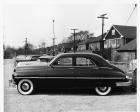|
Re: Carburetor WCFB 4-Barrel
|
||||
|---|---|---|---|---|
|
Home away from home
|
Quote:
Don't worry, there's penty of mess in my garage! LOL But one of my high school shop teacher's motos was "A place for everything and everything in it's place". I spent all the time I could there! Quote:
Good idea to check the check valve, I may just pop it off and soak it in parts cleaner to make sure it's good and clean regardless. Looks like it should come off without too much trouble. 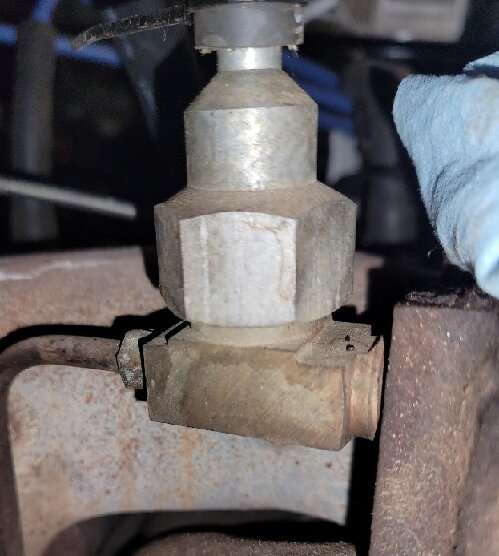 That's a good Servcie Counselor, I'll give it a going over and see how it compares to the service manual and the instructions that come with the carburetor and the YouTube video from Mike's. I'm certainly not short on information! LOL I recall another Service Counselor that I read last year where they suggested the choke thermostat should not be set to 1 1/2 points rich, but at 0. I've had mine set at 0 and it seems to be good. Richer may be better for winter starts, but not many of those happening!
Posted on: 2024/9/8 9:34
|
|||
|
||||
|
Re: Carburetor WCFB 4-Barrel
|
||||
|---|---|---|---|---|
|
Home away from home
|
Quote:
Accelertaor pumps are the same, but different.  Thanks for that link, lots of parts available for these carbs still. I think the rebuild kit I have includes everything I need, but what do I know............this is a new adventure for me!
Posted on: 2024/9/8 9:44
|
|||
|
||||
|
Re: Carburetor WCFB 4-Barrel
|
||||
|---|---|---|---|---|
|
Home away from home
|
Quote:
Perfect! Thanks for the explination, it's good to know what these holes were for! And yes, the less heat the carb gets the better!
Posted on: 2024/9/8 9:49
|
|||
|
||||
|
Re: Carburetor WCFB 4-Barrel
|
||||
|---|---|---|---|---|
|
Home away from home
|
Another question...
Is the vent cap supposed to have any type of seal, or is it just metal on metal? If there was a seal, it's not their any more, and I don't anything in my rebuild kit that would fit there. 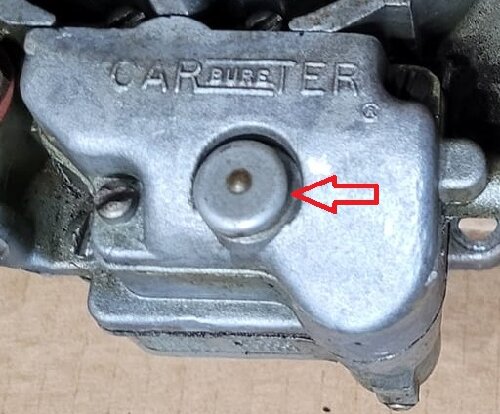
Posted on: 2024/9/8 9:52
|
|||
|
||||
|
Re: Carburetor WCFB 4-Barrel
|
||||
|---|---|---|---|---|
|
Home away from home
|
53 Cavalier
IMO no sealing, other than metal on metal, is required at that location. The Carter illustrated parts list does not show a seal or gasket sealing the cap to the cover. The WCFB being a ‘modern’ carburetor vents the float bowls to the air horn. This was done primarily to avoid the tendency of enriching when the air filter produces more pressure drop. Paper air filters were replacing the oil bath designs during this same time period, and the oil bath design rarely would produce excessive pressure drop . . . not so the paper filters. The following is contained in a Carter service manual: 23. To make the bowl vent cap adjustment, install the metering rod dust cover. Close the throttle valve tightly and the bowl vent cap should lift 1/16". Bend the actuating arm to obtain the correct lift. Artwork attached . . . Note no gasket or seal is shown. dp Attach file:  CarterWCFBVentCap.jpg (42.32 KB) CarterWCFBVentCap.jpg (42.32 KB)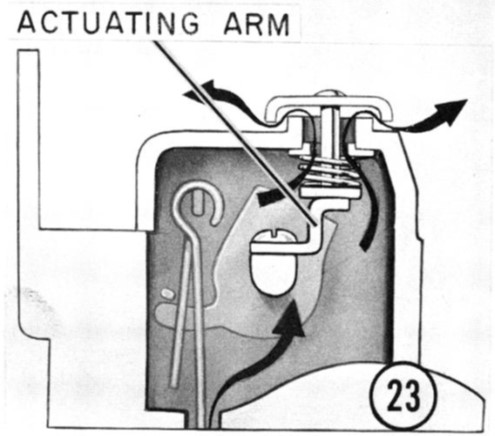
Posted on: 2024/9/8 11:21
|
|||
|
||||
|
Re: Carburetor WCFB 4-Barrel
|
||||
|---|---|---|---|---|
|
Home away from home
|
Quote:
Thank you! This make sense to me! Always fun taking on a new project and not only getting things rebuilt, but learning how they work. The carburetor has lots going on in a small space!
Posted on: 2024/9/8 11:35
|
|||
|
||||
|
Re: Carburetor WCFB 4-Barrel
|
||||
|---|---|---|---|---|
|
Home away from home
|
I believe the design intent is for the cap to close before the transition onto the main circuit, and be full open at idle and engine shutdown. You might ask why not have it open at all times, the answer of which goes back to the air filter pressure drop, where venting to the airhorn is superior. Another draw-back of venting directly to atmosphere, as in the Carter WDO, is the possibility of debris entry and the possibility of blocking air bleed orifices. While I’ve never found rocks in the WDO air bleeds I sure have found gravel in a Zenith design that vents to atmosphere through a hole that is about 3/8 diameter. If the cap doesn’t close completely the carburetor would have two vent paths, however if the car is equipped with an oil bath air filter that is of lesser importance with respect to enrichment. The air flow into the cap will however be higher, and thus the possibility of debris entry. A second function of the cap is to vent the carburetor to atmosphere during shutdown, and thus provide an exit path for fuel vapor. The goal would be to have sufficient valve area to keep the internal pressure low enough to avoid percolation discharge from the main discharge nozzle (hot start problem). Over a period of a few months my WCFB always seems to have fuel residue around the cap, which I suspect validates that venting does occur as intended. The check and adjustment of the cap motion should be conducted with the dust cover gasket (pn 121-208) in-place.
dp
Posted on: 2024/9/8 12:12
|
|||
|
||||
|
Re: Carburetor WCFB 4-Barrel
|
||||
|---|---|---|---|---|
|
Home away from home
|
Quote:
My vacuum check valve works well, but going to clean it anyway. I don't think I will take it apart, but it does look like it's easy to take apart, if necessary, for servicing. 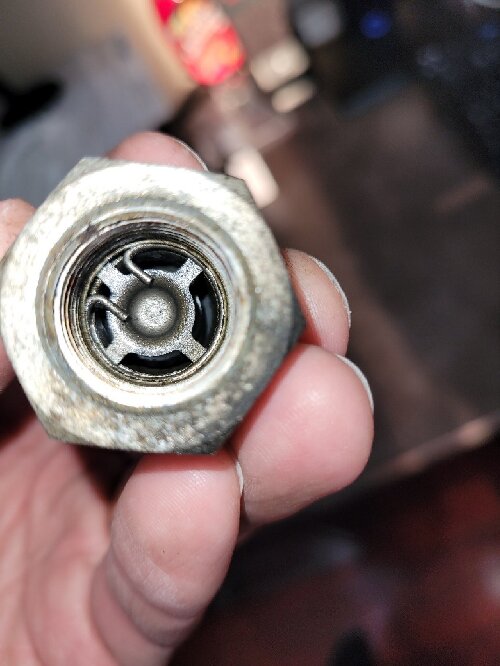
Posted on: 2024/9/8 20:08
|
|||
|
||||
|
Re: Carburetor WCFB 4-Barrel
|
||||
|---|---|---|---|---|
|
Home away from home
|
From what I gather there are no kits for rebuilding one either, at least according to Fred at Max Merritt. Based on your photo, it looks much like a check valve found in a carburetor, though. I don't think these changed from 1952 through 1956 and I have an NOS one for my Clipper but that does not necessarily mean that it's good even though it is, or that it will last.
Posted on: 2024/9/8 20:25
|
|||
|
All generalities are false.
Once I thought I was wrong but I was mistaken. Don Pierson Packard / IMPERIAL page CA DMV Licensed Vehicle VIN Verification 1951 Henney-Packard 3-Door Long Wheelbase Air Force Ambulance The 1951 Henney-Packard is For Sale! 1954 Packard Patrician 1954 Packard Patrician Parts Car 1956 Clipper Custom Sedan |
||||
|
||||

